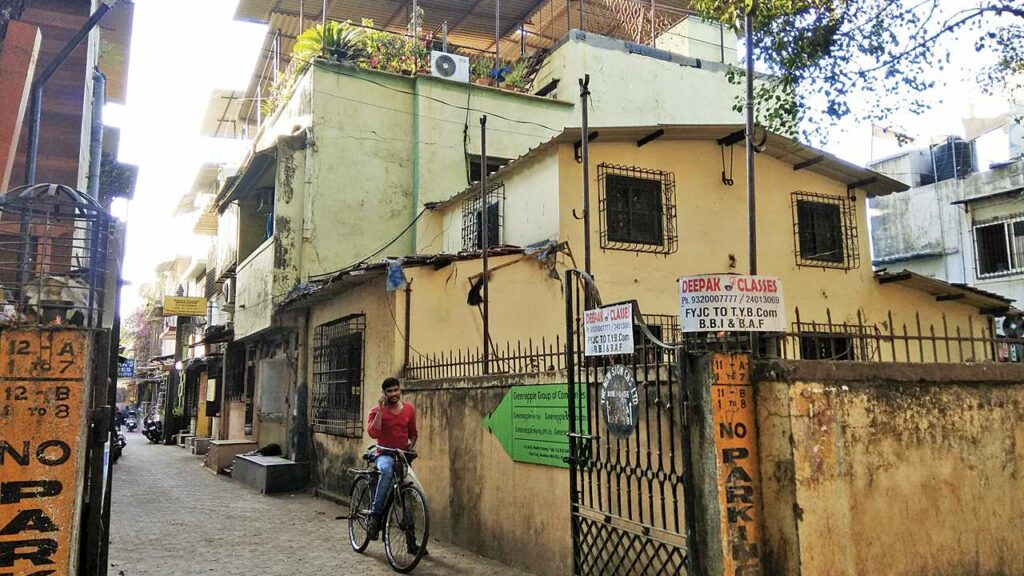Whispers of a Forgotten Homeland
Whispers of a Forgotten Homeland
Walking through Chembur Camp
By Ar. Vibha. S

The lingering aroma of kulchas makes us walk faster- the heady scent transporting one to the Punjab of the 1940s. But the sounds of shops abuzz with energy push forward. Sounds of frantic typing from the last few type-writer training centres set the pace for us. These sounds and fragrances guide us, as we walk through the heart of one of Mumbai’s largest refugee camps, the settlement for the Partition survivors through Chembur Camp.
Old hand-painted signboards for TVs, jostle for space with snazzy new stores for LCDs. A mix of the old and new in what was once the British Army’s barracks. In 1947, the collector of Bombay allotted land to the Partition Survivors. The ‘Collectors Colonies’ soon metamorphosed to today’s bustling, expanding suburb of Chembur. But what makes this settlement distinct from the various concrete suburbs of Mumbai is – its Collective Memory.
Conversing with the elders who run the shops, Gurudwaras and Sitaladevi Mandir here – one recognizes the strength required to retell their history. Tales about the partition, marked by wounds that remain fresh. Oral histories of severe trauma – that’s not even told to their descendants. The tragic history is of longing, broken families, burnt homes, and unspeakable losses. All forgotten – to move on and build for a brighter tomorrow.
This settlement is, therefore, a palimpsest of memories. It showcases the strength, emotions, and effort it takes to rebuild a sense of community. The community that remembers to forget- to establish a ‘home’. It is a kaleidoscope of history and modifications. There is an ‘auto-construction’ (Teresa Caldera) amidst 75 years of unfulfilled political promises. This leads to the manifestation of the community’s collective architectural ambitions. What looks like glitzy extensions to old buildings- is the inhabitants’ method of making amends to old wrongs. Modifications done by expanding the only land ‘given’ to those who lost everything. With every land amendment, hopes increase. Their ambitions help people re-construct, innovate and succeed. The old gallis are now narrower, the buildings more crowded. But the homes are larger, TVs are newer, dreams are now attainable, and smiles are happier.
The impact created on a pedestrian is not because of timeless architectural monoliths. It is due to the smaller, emotional steps taken by the entire community to re-imagine a homeland. Architecture is in the memories kept alive through food, camaraderie, and knowledge. This settlement is of hope- where the new and old co-exist. The markets here offer iPhones but also repair heirloom timepieces. The architecture here is of a community’s ambitious innovations- enveloped in familial safety.
Thus, homemaking here has been a process of building dreams onto what was ‘given’. By blurring the echoes of the past with the warm chaos of a bright future – Chembur Camp helps the entire diaspora of ‘refugees’ find a home.
Vibha graduated from the School of Environment and Architecture (SEA), Mumbai, in 2020. She interned at Studio Mumbai Architects and is currently a junior designer at Edifice.
